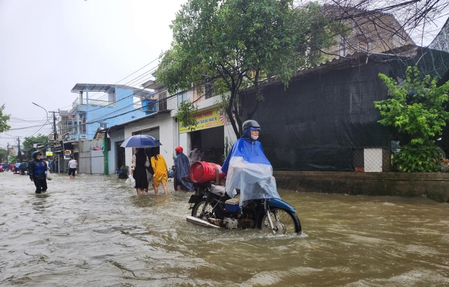Hanoi: Heavy rains and flooding triggered by Typhoon Wutip have left seven people dead and caused extensive agricultural and property damage in central Vietnam, reports said on Tuesday.
Four deaths were reported in Quang Binh province and three in Quang Tri province, while one person was injured in Quang Tri, according to the Department of Dike Management and Natural Disaster Prevention.
According to reports, floods have submerged more than 33,000 hectares of rice fields, along with thousands of hectares of aquaculture ponds, while eight ships have been sunk or damaged, Xinhua news agency reported.
Local authorities have visited affected families and mobilised emergency forces to support recovery efforts and help residents resume normal life, the Vietnam News Agency said.
Earlier on June 15, at least six people were killed and another remains missing in central Vietnam due to torrential rains and flooding triggered by Typhoon Wutip, according to the Vietnam Disaster and Dyke Management Authority.
Six fatalities were reported in Quang Binh and Quang Tri provinces, while one person went missing after being swept away by floodwaters in Quang Binh.
The typhoon also damaged 47 houses, either collapsing them or blowing off their roofs, and inundated more than 58,000 hectares of rice fields and other crops across the region.
From January to May, natural disasters left 40 people dead or missing nationwide, according to the National Statistics Office.
Earlier on June 14, Typhoon Wutip had caused severe flooding in central Vietnam, leaving three people dead.
Two victims died in Trieu Phong district of Quang Tri province during flood prevention efforts, while another was drowned in Hai Lang district.
In neighbouring Quang Binh province, four people were missing as search and rescue teams continue to expand operations under improving weather conditions.
Wutip, the first typhoon which made landfall in China this year, developed over the South China Sea.
In recent summers, China has faced a series of extreme weather events, ranging from intense heat waves and droughts to heavy rainfall and flooding.
As the world’s largest emitter of greenhouse gases, China also leads in renewable energy development and has committed to achieving net-zero carbon dioxide emissions by 2060.
Last August, torrential rains brought by Typhoon Gaemi, which tracked from the Philippines and Taiwan before hitting eastern China, resulted in at least 30 fatalities and left many others missing.
